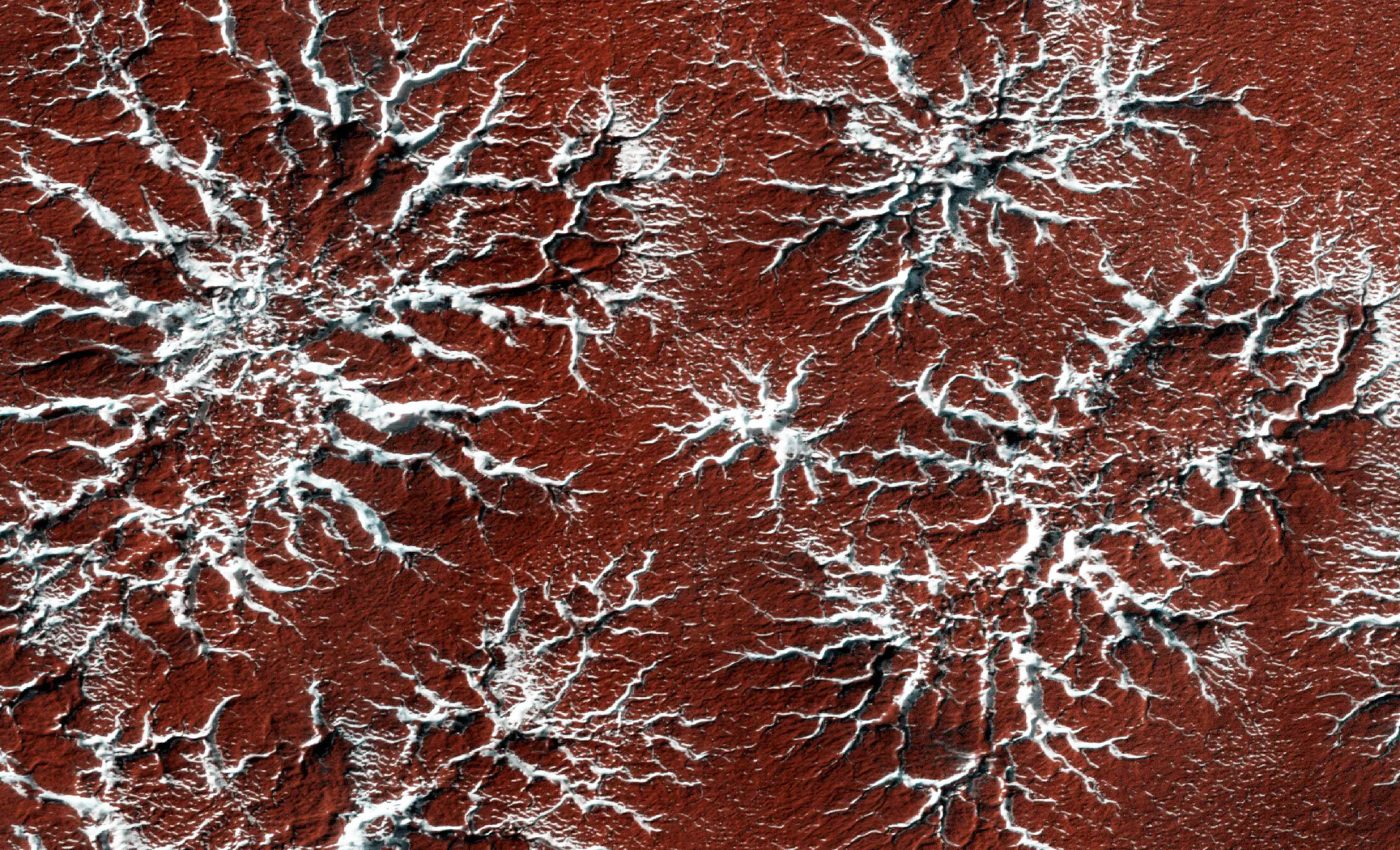
Mars 'spiders' recreated in NASA lab for the first time
Mars is home to strange spider-shaped geologic formations known as the araneiform terrain, which are found mostly in the southern hemisphere.
These formations, visible in images from orbiting spacecraft since 2003, have captured the attention of scientists worldwide. Despite their fascination, the creation of these structures remains somewhat of a mystery.
A new research paper describes experiments that mimic Mars’ conditions, aiming to understand the formation of these Martian “spiders.”
Sprawling spider formations on Mars
The mystery started in 2003 when scientists noticed the sprawling spider-like formations in orbiter images. According to NASA, it was not clear how these geologic features were created.
The formations are often found in clusters, giving the planet’s surface a visibly wrinkled appearance. Imagine a sheet of crumpled paper; that’s how Mars looks, only from a planetary perspective.
The prevailing theory suggested that these “spiders” were shaped by processes involving carbon dioxide ice, something alien to Earth.
At NASA’s Jet Propulsion Laboratory (JPL), a team led by Dr. Lauren Mc Keown successfully replicated these formation processes in a simulated Martian environment.
Probing the planet: Kieffer model
“The spiders are strange, beautiful geologic features in their own right,” said Dr. Mc Keown. “These experiments will help tune our models for how they form.”
Imagine the Martian surface laden with transparent slabs of carbon dioxide ice. As sunlight penetrates these icy layers, the dark soil underneath absorbs the heat.
The intense heat triggers sublimation (direct transformation of a solid into gas, skipping the liquid phase), turning the ice into carbon dioxide gas.

With increasing pressure, the gas cracks the ice, subsequently escaping from these fissures. Along with the gas, a dark stream of dust and sand billows out, settling on the icy surface.
This phenomenon repeats until spring arrives, and the remaining ice sublimes, leaving behind the scars of the mini-eruptions. These scars form the spider-like formations that we now see.
Replicating Mars’ spider-like features
To reach these conclusions, Dr. Mc Keown and her team recreated Martian conditions inside of a lab. A daunting task indeed, given Mars’ extreme low temperature and air pressure.
The team used a liquid-nitrogen-cooled test chamber at JPL, called DUSTIE, to simulate these conditions.
“I love DUSTIE. It’s historic,” said Mc Keown. DUSTIE was previously used for testing a prototype of a rasping tool designed for NASA’s Mars Phoenix lander.
The experiment involved chilling Martian soil simulant in a container placed in a liquid nitrogen bath before being placed in the DUSTIE chamber.
The air pressure was then reduced to match Mars’s levels. The chamber was infused with carbon dioxide gas, which eventually condensed into ice over a span of three to five hours.
Creating the perfect conditions
A crucial part of the experiment was creating the right ice conditions. The ice needed to be thick and translucent — a trial and error affair.

Once this was achieved, a heater was set under the soil simulant, initiating a plume formation. The moment was pure ecstasy for Dr. Mc Keown who had been striving for this breakthrough for five years.
“It was late on a Friday evening and the lab manager burst in after hearing me shrieking,” said Dr. Mc Keown. “She thought there had been an accident.”
Significance for missions to Mars
The successful replication of Martian araneiform terrain in a controlled lab environment holds tremendous significance for future Mars missions.
Understanding the formation of these spider formations not only unravels a geological mystery but also informs us about the planet’s climate and geological history.
This knowledge could play a pivotal role as we prepare to send humans to Mars, aiding in the selection of landing sites and the design of exploration tools.
By deciphering these enigmatic features, scientists can better predict the environmental conditions that future missions might encounter – thereby enhancing the safety and efficiency of extraterrestrial explorations.
Future research directions
The breakthrough achieved by Dr. Mc Keown and her team illustrates the power of interdisciplinary collaboration in planetary science. Geologists, climatologists, and engineers combined their expertise to recreate a slice of Martian reality on Earth.
The interdisciplinary approach not only expedited the process of solving a long-standing mystery but also set a precedent for future scientific inquiries.
By successfully replicating the “spider” formations, the experts have taken a giant leap in understanding Martian dynamics. The research provides invaluable insights into the evolution and climate of Mars.
The next step is to replicate these experiments under simulated sunlight to further narrow down the conditions in which this phenomenon occurs.
The study is published in The Planetary Science Journal.
—–
Like what you read? Subscribe to our newsletter for engaging articles, exclusive content, and the latest updates.
Check us out on EarthSnap, a free app brought to you by Eric Ralls and Earth.com.
—–













